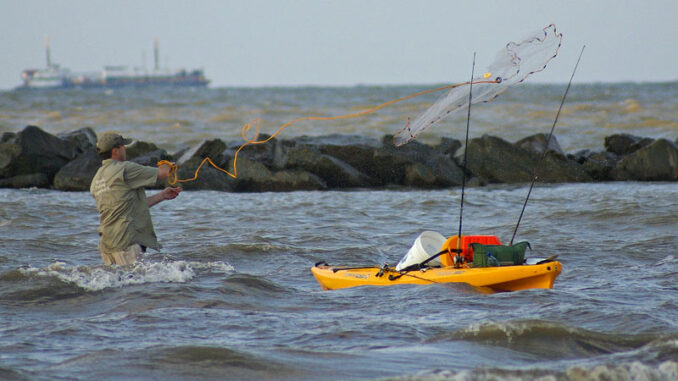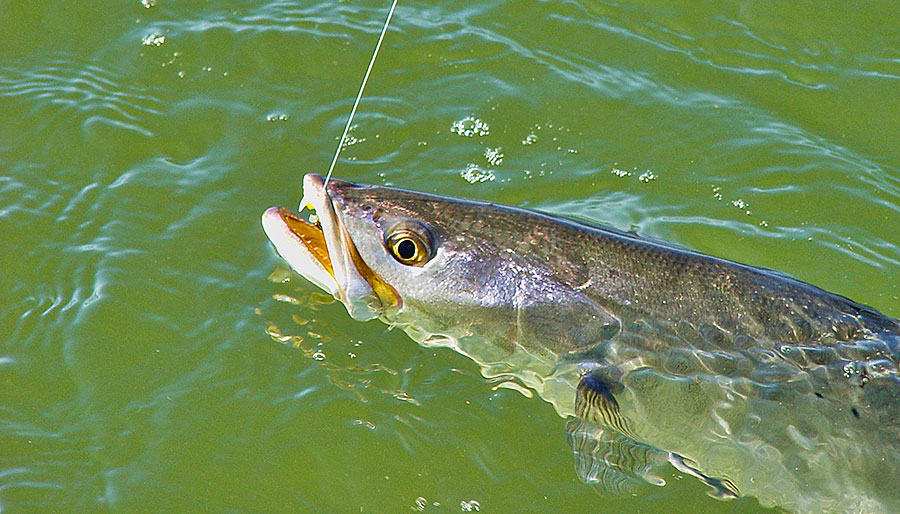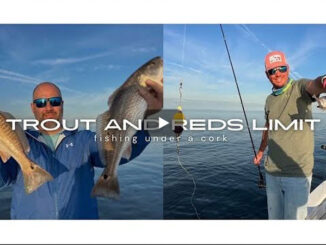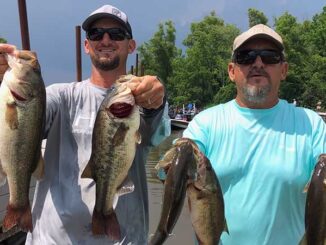
The brown shrimp have moved into the marsh and the trout and reds are hot on their tails — literally. There is no question that live bait outperforms artificial more often than not. However, kayak fishing provides some challenges for anglers wanting to keep a healthy supply of shrimp or other live bait along for the day’s trip.
Obtaining live bait can be as easy as heading to your local marina or bait shop for purchase of some fresh, off the boat offerings. However, like most things these days, inflation has driven the prices up. In some locations, the price of live shrimp and minnows has topped the 50 cents apiece mark. No, it is not price gouging. With the cost of fuel, other expenses, and all the special equipment necessary to keep the bait alive on the bait boat and at the marina, it is just another increased cost that anglers must bear.
Catch your own
For live shrimp, a cast net is the least expensive and easiest way to catch a supply for the day’s fishing. Throwing a cast net take a little practice to get proficient. The goal is to throw a perfect “pancake” where the net fully opens just before it hits the water. This ensures maximum spread, putting the net over a wider area to trap more bait. YouTube has numerous videos that show various throwing techniques. Find what works best for you. Once mastered, throwing the net becomes second nature.
Throwing a cast net from land or a dock is one thing, however, doing so while wading or in your kayak takes some extra effort. If you plan to throw a net while in your kayak, smaller nets in the four to six foot range are much easier to manage. If you have good balance and your kayak is super stable, you can carefully cast the net while standing. The extra height allows the net more time to fully open before hitting the water. A small cast net can be successfully thrown from the seated position in the kayak, but it takes some patience.
Cast nets work great for catching shrimp and a wide variety of small bait fish. You can easily catch enough bait for a full trip with just a few successful throws. Keeping the net in the boat also allows you to replenish your supply if necessary while out on the water. Cast nets are inexpensive and can quickly pay for themselves versus the cost of buying live bait.
For minnows, croakers and pinfish, wire minnow traps work well. However, these are best placed out overnight to allow time for the bait to enter the trap.
Baiting for bait
Sure, you can be successful throwing a cast net willy-nilly, but having a plan and throwing in high-percentage situations is much more reliable. If you can see bait movement, throwing the net on top of bait provides a high success rate. Also, selecting locations that have a high probability of holding bait is a good strategy. Anywhere near docks, rocks, the opening of a culvert, pilings, bridge supports, or the mouths of small marsh drains are all high percentage areas to throw a net.
Another trick, especially for shrimp, is to bait the area you plan to throw the net. A small mesh bag with wet or dry cat food works great to bait and attract shrimp. You can also punch several holes in a can of cat food to allow bits of the food and the smell and oils escape. With either method, tie a string to the can or bag for retrieval and proper disposal when done. Almost any cat food works, but those that are fish flavored seem to do best.
Keeping bait alive
Catching or buying live bait is one thing, keeping it fresh and alive throughout the trip is another. Kayaks have limited space, so large livewells are generally not an option. However, several companies, including the kayak manufacturers themselves, make small livewells designed and suited for easy use in the kayak.

Pumped with either air or recirculating water, the bait stays healthier. As the weather and water temps warm, these systems help keep the bait water cool and oxygenated.
Kayakers love DIY projects and there are many YouTube videos on making livewells out of various containers with small pumps to keep bait alive and kicking. If you are making short trips, a bucket with a battery powered air pump may be all you need. Simple floating minnow buckets also work good for short trips. However, onboard livewells seem to work best and there is no drag on the kayak as is caused by the floating minnow buckets that must be towed around from spot to spot.
Never overcrowd your bait or mix shrimp and fish in the same container.
Fishing techniques
When using any live bait, size down your hooks to allow the bait to move as freely and naturally as possible. There’s no sense in using live bait if it is constrained by an anchor-sized hook. The main techniques are under a popping cork, Carolina rigged, or free-lined.
Popping corks are easy and effective. Using a Kahle or small treble hook, attach a small split shot above the hook. Keep your pops a bit gentler and allow the bait to do the attracting work. Keep an eye on the cork. Your bait gets nervous when a fish is nearby, and it can’t escape due to being tethered to the hook. Oftentimes you will see your shrimp jumping out the water trying to evade the predator fish. Get ready.
Placing a small weight above the bait for a Carolina rig allows the weight to rest on the bottom while the bait is free to swim around and attract the fish. This again is where smaller hooks work well so that the bait can have more action.
Free lining a live bait is productive, but a finesse technique. With only a small hook, the bait is free to swim anywhere it wants and it is often difficult to detect a strike. Casting is difficult due to the lightweight bait/hook combination and is best practiced with a spinning rod. After the cast, keep a close eye on the line and watch for any twitches or sudden movements.
Just because you fish from a kayak doesn’t mean you are precluded from using live bait. Whether buying or catching your own, rig up with a small livewell and you can carry enough live bait for a full day’s outing.


